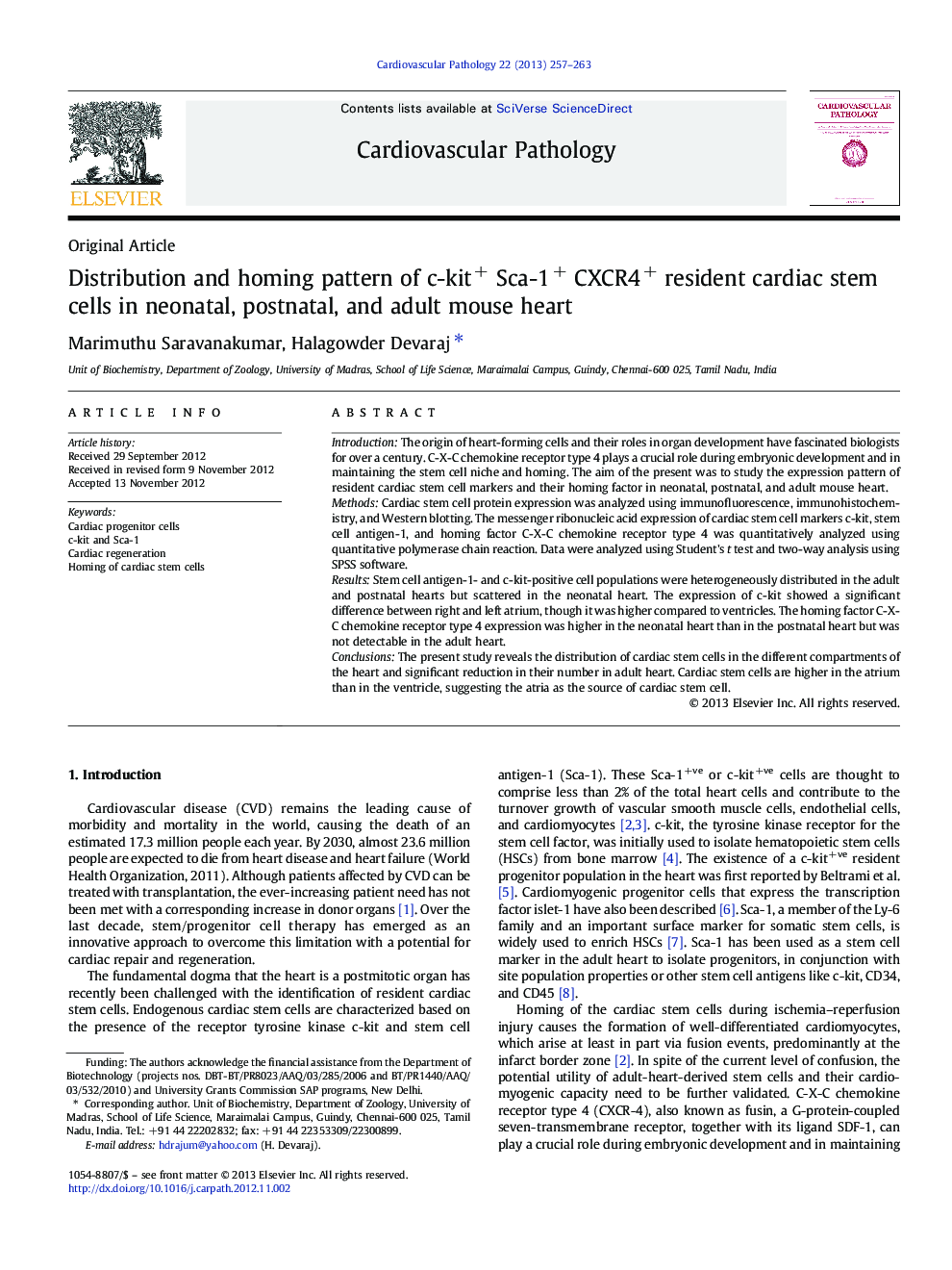| Article ID | Journal | Published Year | Pages | File Type |
|---|---|---|---|---|
| 2899084 | Cardiovascular Pathology | 2013 | 7 Pages |
IntroductionThe origin of heart-forming cells and their roles in organ development have fascinated biologists for over a century. C-X-C chemokine receptor type 4 plays a crucial role during embryonic development and in maintaining the stem cell niche and homing. The aim of the present was to study the expression pattern of resident cardiac stem cell markers and their homing factor in neonatal, postnatal, and adult mouse heart.MethodsCardiac stem cell protein expression was analyzed using immunofluorescence, immunohistochemistry, and Western blotting. The messenger ribonucleic acid expression of cardiac stem cell markers c-kit, stem cell antigen-1, and homing factor C-X-C chemokine receptor type 4 was quantitatively analyzed using quantitative polymerase chain reaction. Data were analyzed using Student's t test and two-way analysis using SPSS software.ResultsStem cell antigen-1- and c-kit-positive cell populations were heterogeneously distributed in the adult and postnatal hearts but scattered in the neonatal heart. The expression of c-kit showed a significant difference between right and left atrium, though it was higher compared to ventricles. The homing factor C-X-C chemokine receptor type 4 expression was higher in the neonatal heart than in the postnatal heart but was not detectable in the adult heart.ConclusionsThe present study reveals the distribution of cardiac stem cells in the different compartments of the heart and significant reduction in their number in adult heart. Cardiac stem cells are higher in the atrium than in the ventricle, suggesting the atria as the source of cardiac stem cell.
